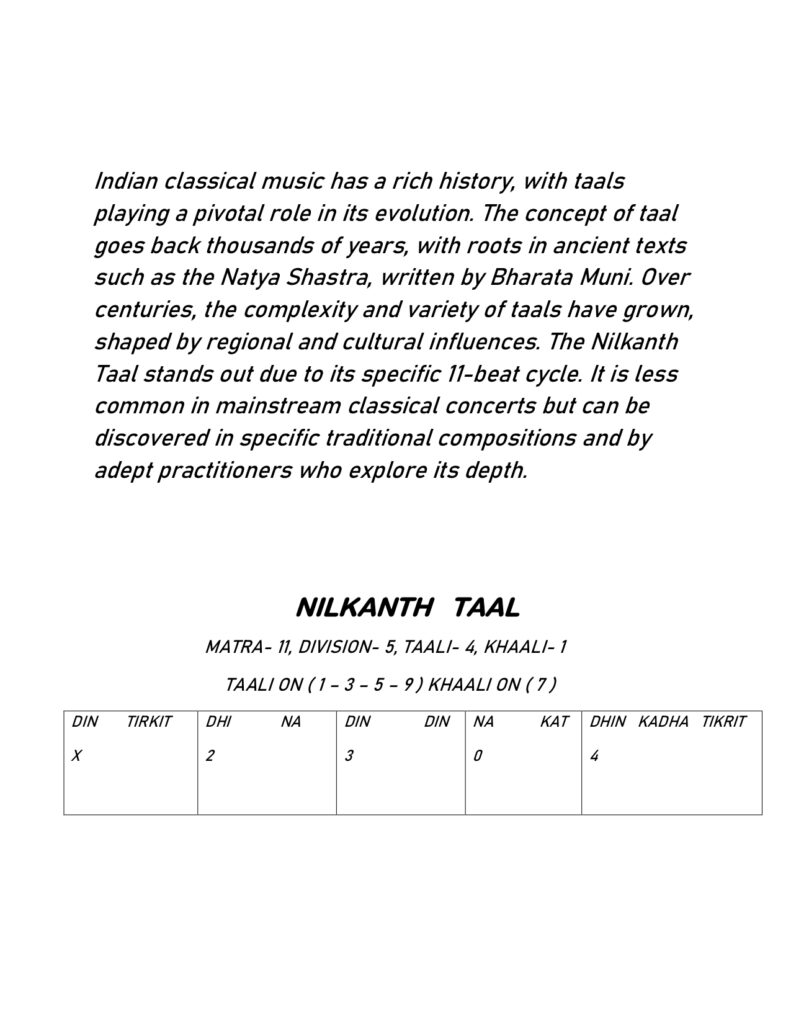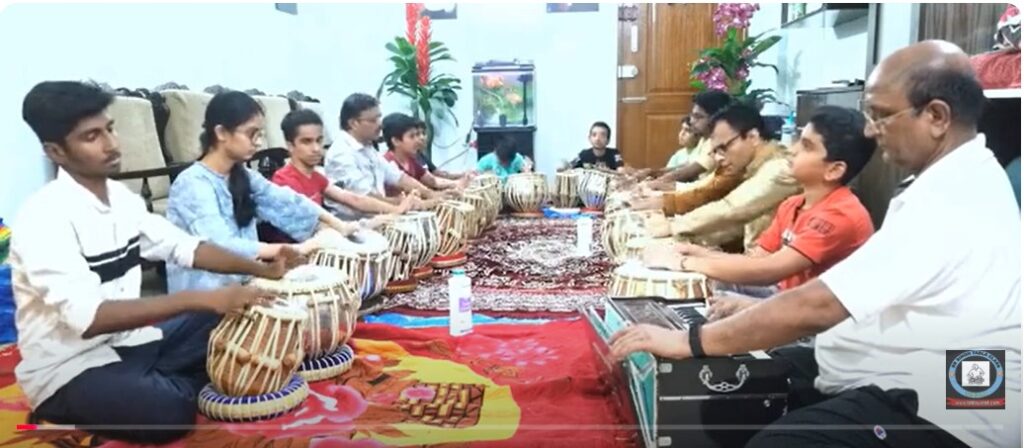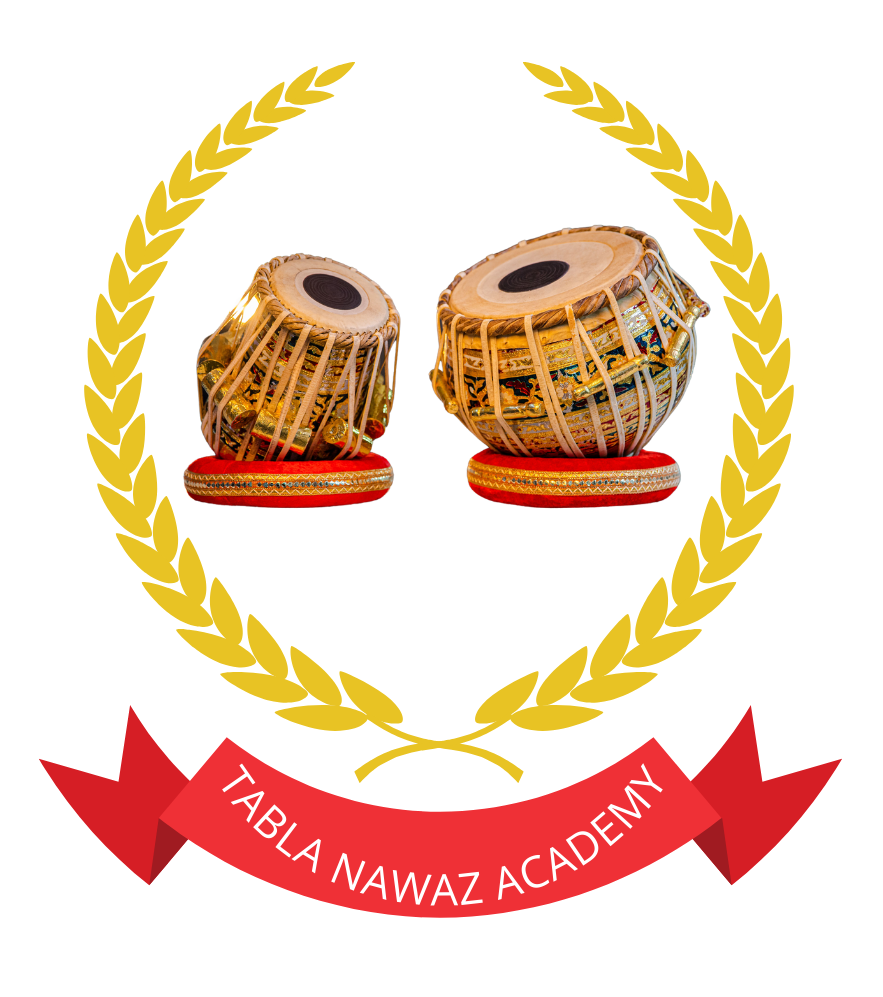Nilkanth ,Taal theka-matra – 11,The Nilkanth Taal is a sophisticated rhythmic cycle used in Indian classical music, characterized by its intricate structure and unique emphasis points. As with many aspects of Indian classical music, the taal forms the foundational framework upon which melodies and improvisations are built.
Introducing the-

https://www.youtube.com/@BhagawanSingh
https://www.facebook.com/sbsinghtablaguru
Overview of Nilkanth Taal
- Matras (Beats): 11
- Divisions (Vibhag): 5
- Taali (Claps): 4, occurring on beats 1, 3, 5, and 9
- Khaali (Wave): 1, occurring on beat 7
The distinct structure of the Nilkanth Taal, with its offbeat claps and wave, allows for dynamic and challenging compositions. Its asymmetrical nature demands precision and a deep understanding of rhythm, making it a choice for skilled musicians to showcase their proficiency in laya (tempo control) and tala (rhythmic sophistication).
Popular Songs Featuring Nilkanth Taal
While it’s less common to find mainstream songs composed in the Nilkanth Taal due to its complexity, it may appear in certain classical bandishes or classical fusion experiments. Some modern composers might incorporate it to evoke a certain feel or mood, similar to the way complex time signatures are sometimes used in Western music for effect.
Since the Nilkanth Taal isn’t as widely employed as other taals like Teentaal or Dadra, not many well-documented popular songs are available. However, its complexity may attract composers in the realm of fusion music or specific classical ragas aiming for a distinctive rhythmic pattern.
Exploration and Experimentation
As with many lesser-known taals, the beauty of Nilkanth lies in its potential for exploration. Musicians and composers may choose to delve into this taal to challenge themselves and offer something unique to their audience. Interested listeners may find recordings of tabla solos or classical performances exploring this rhythmical pattern on dedicated platforms or concert archives.
Whether you are a musician looking to broaden your rhythmic horizon or an enthusiast eager to understand the nuances of Indian classical music, the Nilkanth Taal offers a rich tapestry of rhythmic possibilities. Its beauty lies in its challenge, inviting both performer and listener to engage deeply with its rhythm.

